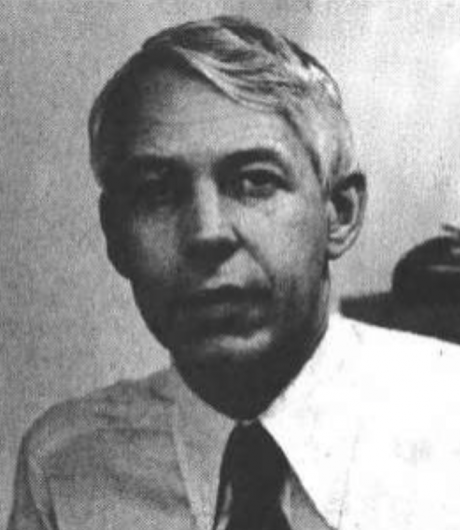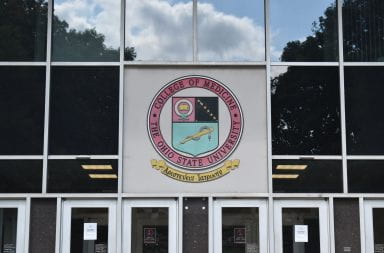
Richard Strauss, a former wrestling team physician and an assistant professor of medicine, is being investigated by Ohio State on allegations of sexual misconduct. Credit: Lantern file photo
An independent investigation of former Ohio State physician Richard Strauss found that university employees knew of the doctor’s abuse as early as 1979 but took no action, according to a report released today.
The investigation, which began in April 2018, concluded that Strauss’ abuse of at least 177 former student-athletes and students was known by employees and reported to the State Medical Board of Ohio in 1996. Ohio State did not report his actions to the police and allowed Strauss to retire in 1998 with emeritus status.
“On behalf of the university, we offer our profound regret and sincere apologies to each person who endured Strauss’ abuse,” University President Michael V. Drake wrote in an email sent to the university community. “Our institution’s fundamental failure at the time to prevent this abuse was unacceptable — as were the inadequate efforts to thoroughly investigate complaints raised by students and staff members.”
Strauss was employed at the university from 1978 to 1998, during which time he served as team doctor for 17 men’s varsity sports. He was also a physician at the university’s student health center.
Strauss died by suicide in 2005.
Ohio State is the subject of three lawsuits filed by, and on behalf of, Strauss’ victims.
“As a victim of OSU’s failure to protect me from sexual abuse by Dr. Richard Strauss, I want my university to take full responsibility for the harm caused to me and my fellow alumni,” former student and plaintiff Kent Kilgore said in an email. “Dreams were broken, relationships with loved ones were damaged, and the harm now carries over to our children as many of us have become so overprotective that it strains the relationship with our kids.”
The investigation found that university personnel received complaints of “unusually prolonged” genital examinations performed by Strauss shortly after he was hired in 1978, during which he refused to allow fellow staff members in the room. The report also noted that university employees were aware that Strauss often showered with male athletes.
Strauss fondled the athletes and interrogated them about their sexual history and preferences during medical exams — questions that were unrelated to the treatment his clients sought, the report stated.
Complaints and reports about Strauss’ conduct were not elevated beyond the athletic department or Student Health Services until 1996.
In 1994, members of the fencing team filed complaints of misconduct against Strauss, prompting the head team physician and director of sports medicine at Ohio State to conduct an investigation. Strauss stepped down from his role as the team’s physician, but no report was released regarding the investigation.
Strauss was still employed at Student Health Services when another complaint of sexual misconduct was made in 1995 by two male students reporting that Strauss performed inappropriate genital exams.
As a result of the complaint, the director of student health introduced a special intake form for patients at the men’s clinic and established a “quasi-chaperoning” policy for Strauss. According to the report, no further action was taken, nor did the university conduct an investigation into the complaint.
The university did not suspend Strauss as a treating physician until January 1996, when another complaint was made by a patient in the student health center. Reacting to this, the university undertook a “very limited” investigation of Strauss’ complaint history, the report states.
The university’ 1996 disciplinary action resulted in Strauss’ permanent removal from the Department of Athletics and the health center, but his status as a tenured faculty member was unaffected, the report stated.
Strauss’ actions were reported to the State Medical Board of Ohio that same year, the report states.
Once removed from the university, Strauss established a private men’s clinic — called Men’s Clinics of America — in Columbus, encouraging Ohio State athletes to make appointments to be treated, and advertised in The Lantern student discounts for his services. He continued to sexually abuse Ohio State students through this facility, according to the report.
Strauss concurrently persisted in protesting to various university officials his removal from the athletics department and Student Health Services.The report states that despite these efforts Strauss was told in October 1997 that the university would not consider reinstating him as a physician.
In April 2018, the Ohio Attorney General’s Office appointed Porter Wright Morris & Arthur LLP as legal counsel for the university, and Porter Wright hired Perkins Coie LLP to conduct the investigation.
U.S. attorney Markus Funk said in November 2018 that Perkins Coie had reviewed more than 34,000 documents from archives and outside sources.
According to the final report, approximately 600 interviews were conducted with 520 interviewees, including the 177 victims.
Ohio State filed a motion on May 1 with the United States District Court for the Southern District of Ohio in Brian Garrett et. al. v. Ohio State University for the medical board to release the full, unredacted report containing descriptions of the abuse. Only redacted portions of the report have been made available after the board opposed the motion, and it was ultimately denied by the federal court.
The filing said that names of former patients, and non-Ohio State complainants and witnesses, and other potentially identifying information, would remain redacted in the final report.
This story will be updated throughout the day as more information becomes available.


